Houseplants That Clean the Air

can also help to clean the air.
Houseplants have long been loved as a way to bring some of the warmth and comforts of the outside, natural world indoors. But did you know that the plant on your desk may not just be brightening your day, it could also be helping to clean your air?
Thanks to some initial research by NASA scientists who were interested in the potential of plants to help clean the air, we now know that many popular houseplants are actually quite good at removing some of the toxins that are often found indoors. Since NASA’s initial research, many have continued look at the air-cleaning abilities of various houseplants.
And researchers have found that it’s not just the plants. Microorganisms in the potting soil also do a fair job of cleaning the air (this only works if leaves and other detritus aren’t covering up the soil).
Some of the toxins researchers found tht plants remove from the air are: formaldehyde, benzene, acetone, ammonia, trichloroethylene, and carbon monoxide. Of all these formaldehyde is the most prevalent, found in virtually all indoor environments. Formaldehyde pollution indoors can come from wood floorboard resins, pressed wood products, furniture, exhaust fumes, fabric treatments, and heating and cooking fuels.
While many plants help remove toxins, this is a list of six popular houseplants for Floridians that will help clean your air, as well as add a little bit of the outdoors.
Philodendrons
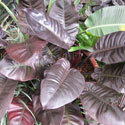
Philodendrons (Philodendron spp.) can be found in a vast array of shapes and sizes, and are some of the most popular house plants. These plants are broken into two groups, vining types like the popular heart-leaf philodendron (P. hederaceum var.oxycardium), and hybrids, also referred to as self-heading, like elephant ear (P. domesticum) or lacy tree philodendron (P. bipinnatifidum), also called selloum or split leaf philodendron.
Heart-leaf philodendrons are often grown in hanging baskets which allow the thin stems and heart-shaped leaves to beautifully spill out of their container. They can also be trained to climb up a screen, trellis, pole, or a bark board. Hybrid philodendrons differ in that they have much larger, spade-shaped leaves and a more upright growth habit. These “tree” philodendrons can bring a tropical touch to your home.
Some philodendrons, including heart-leaf philodendron, contain a chemical that can be toxic if eaten, so be sure to keep these plants away from pets and children.
Aglaonema
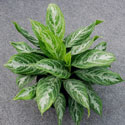
Like a hunky boyfriend, Aglaonema commutatum strikes a balance between being tough and good looking. This versatile houseplant offers handsome foliage yet requires minimal care. Sometimes called Chinese evergreen, aglaonema is popular in both homes and offices because it adds great interest in low-light areas. The long, narrow leaves can reach up to two feet long, and the plants themselves typically grow one to three feet tall and equally as wide. They can be grown in areas that receive medium to low light.
Aloe Vera
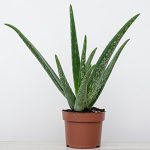
Native to Africa, aloe vera is a hardy succulent that’s easy to grow. It thrives in poor soil and requires very little water. Aloe plants can grow to a height of two feet. The gel that comes from its thick leaves is often used to cool minor burns and sunburns. Keeping an aloe plant in your kitchen is a great idea; a leaf can be quickly grabbed, split open, and placed on burnt skin to quicken healing time. While aloe plants grown outdoors do bloom, those grown inside rarely flower.
Dracaena
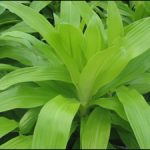
There are roughly 40 species of Dracaena—so-called “corn plants” and “lucky bamboo” are both in this genus—and many of them make great additions to your home or office space. Dracaena marginata is a popular houseplant distinguished from other Dracaena by its reddish-purple edged leaves. Commonly called red-edge Dracaena or Madagascar dragon tree, it grows slowly but can reach 15 feet in height. If you’d like something a little different, the variety ‘Tricolor’ has white leaves edged in pink. Or there’s ‘Limelight’ Dracaena (Dracaena deremensis ‘Limelight’) with striking acid-green foliage.
Spider Plant
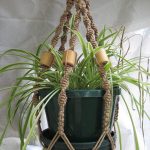
Spider plant (Chlorophytum comosum) is easy to grow and requires very little attention. This tough plant thrives on neglect, making it an ideal houseplant. Its common name comes from the “spidery” look of the baby plants it grows rapidly. The spider plant’s trailing growth makes it perfect for hanging baskets where its cascading leaves can form a graceful skirt. Spider plant forms mounds of narrow leaves and has clusters of small white flowers.
Peace Lily
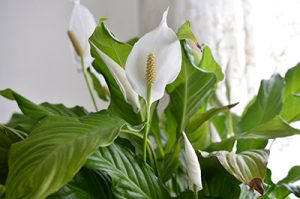
Peace lilies (Spathiphyllum spp.) are a popular indoor plant because of their beauty and hardy nature. They are easy to grow and can provide years of enjoyment with their large, dark green leaves and showy, spoon-shaped, white flowers. Peace lilies grow from one to four feet tall and should be kept in a well-lit area, but out of direct sunlight.
Houseplants really do have a lot of benefits. When thinking about cleaning up your indoor air remember, flowering plants produce pollen, so if you are sensitive to pollen choose a foliage plant. There are plenty of houseplants to choose from and this list is just a starting point for plants that do well indoors and help to keep your air clean.
Also on Gardening Solutions
- Aglaonema
- Aloe Vera
- Dracaena Marginata
- Heart-leaf Philodendrons
- Hybrid Philodendrons
- Peace Lily
- Spider Plant
Sources
Peart, V. Indoor Air Quality in Florida: Houseplants to Fight Pollution. FCS3208. Gainesville: University of Florida Institute of Food and Agricultural Sciences, 2003. Accessed September 10, 2015.
BC Wolverton, WL Douglas, K Bounds (July 1989). A study of interior landscape plants for indoor air pollution abatement (Report). NASA. NASA-TM-108061.
UGA research shows some plants can remove indoor pollutants (March 2009). UGA Today, University of Georgia. Accessed July 7, 2020.
